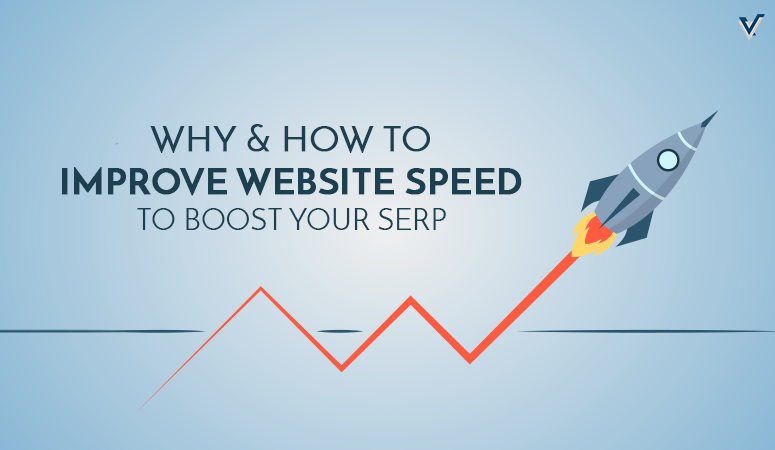
In our previous article, we tried to focus on a quick On-Page SEO Checklist for Small Business Website. In that, we have mentioned about the checkpoints for site speed improvement in order to boost SEO.
We all love websites that load faster. In fact, Google also loves those sites that load faster. For obvious reasons!!!
Hence, today we will discuss in details about how to speed up website to boost SERP Ranking.
Before we start, let’s check out some stats that clearly explains:-
Looking at this stats, one thing is very clear that one can’t ignore “the site speed”.
Some major things to follow to speed up website -
The very first thing - need to do is - CHECK WHY SLOW?
There are numbers of such performance check tools available online that can scan whole page of website and provide a detailed report with solutions.
Here are some of the well-known performance check tools.Here are some common things which solve speed issue of website.
Number of file request is inversely proportional to the site speed due to the server latency. Hence, the increase in the numbers of request results in a decrease in site speed. To boost the site speed, it is essential to reduce the number of HTTP request.
Media consumes the highest percentage of total time to load, but it brings more engagement to the page. Hence, it is advised to use optimized images/media on the website.
Use online image compression tools like Tiny JPGP/PNG, Compressor.io, JPEG Mini that does lossless compression to the heavy images. In WordPress, one can use plugins like Smush.it & Imagify that automatically compress the images. However, it is advisable to optimize images before uploading to website rather than using such image compression plugins.
Load background images in external CSS.
Always specify the image dimension in image tag.
To eliminate the unnecessary reflows and repaint of the page that slows down page rendering.
Always minify the CSS and JS by removing whitespaces, delimiters, and empty elements that are not required for file processing. Many tools to minify CSS & JS Files are available. Even, Google also provides online tools to minify CSS, and JavaScript resources.
Always place CSS and Js at top and bottom of the page respectively, so that it allows other resources to download in parallel. This speeds up execution and rendering time.
In WordPress – use plugins to minify CSS & JS.
Plugins are developed by considering some generic functionalities so they can support various standard websites i.e. they are not optimized. Hence, they contains unnecessary things which may not required for your website. This increases consumption of extra server resources and results in the reduction of loading speed.
So choose plugins wisely and get rid of all unnecessary plugins on your website.
Cache plays a vital role in terms of loading speed as now days all browsers became smart as when they loads any website first time, they saves images – CSS - Js into their temporary storage and re-use it when the same website gets load again this reduces request on server and speed up loading.
So implementation of browser caching in a proper way speed up the website.
In WordPress plugins like WP Super Cache, WP Fastest Cache and WP Total Cache helps in this.
CDN is an effective way to speedup website, especially when we consider the global performance of site. It reduces the main server load by caching & distributing website's static content to the global servers. By this visitorsget content from the most accessible servers near to them. This will reduce the global latency of website.
Few of the common global CDN providers are MaxCDN, CloudFlare etc...
In WordPress, we have plugins as WP Super Cache, Jetpack, W3 Total Cache, WP Fastest Cache provide CDN services.
Yes –Hosting server speed plays a vital role in site. Apart from the speed, consistency of server is also important so always prefer quality hosting service provider.
Create an AMP version of website to load fast on mobile devices as search through mobiles are increasing drastically world-wide.
Broken links miss-guide users and the SEO engines because of which website get least priority so check for broken links and no need to keep those on live site.
Every redirect will delay the page load time and effect on SEO, hence check and solve unnecessary redirects.
Keep database clean and optimized. DB queries help to boost site performance.
Following the above-mentioned steps will not only speed up your website and improves SERP Rankings but will also improve the user experience of the websites.
We tried to mention all major points to improve site speed & welcome all suggestions to improve this article.
Also, feel free to ask any of your queries related to website designing and development in the comment section. Our professional web experts will be happy to help you.
You can also contact us on Skype: vishalmba08 or email us at info@vedwebservices.com.
Enter your email address to subscribe to this blog and receive notifications of new posts by email.
An email was just sent to confirm your subscription. Please check your email and click confirm to activate your subscription.
Success!